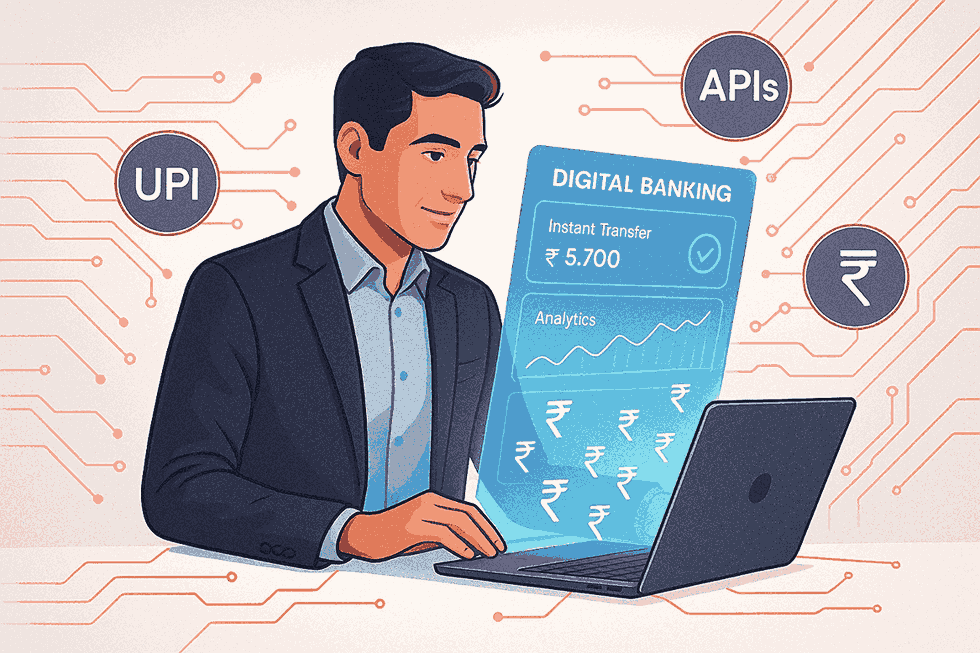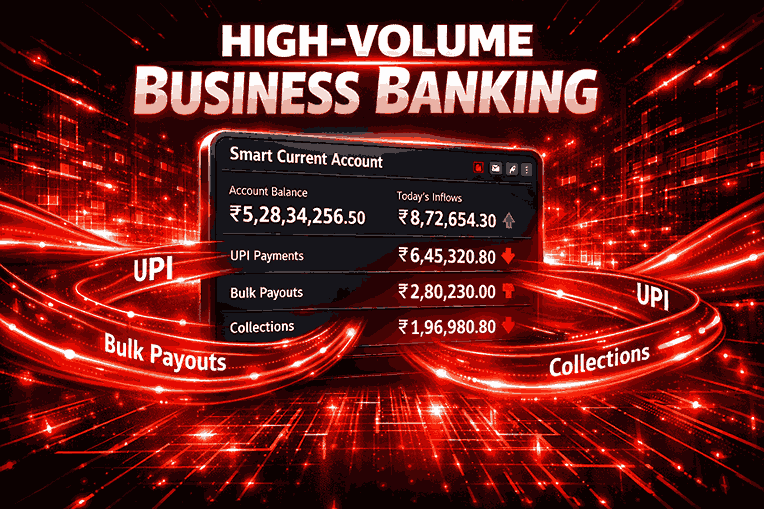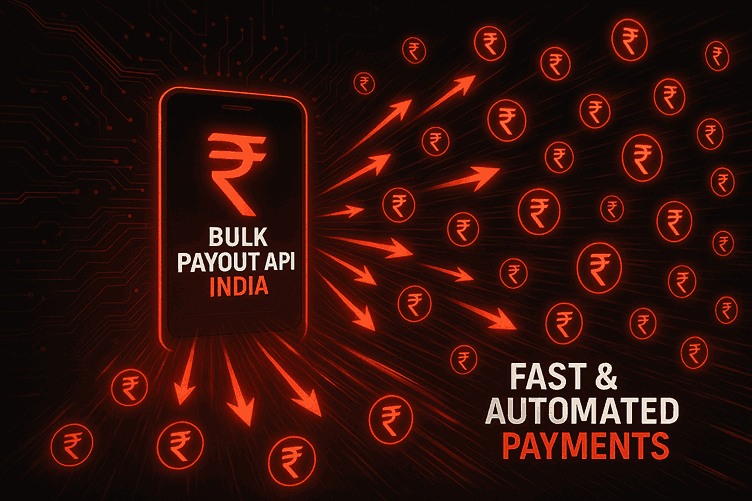How Digital Banking is Changing the Way Businesses Handle Money

Digital
banking is reshaping the financial landscape for businesses worldwide, and
Indian enterprises are among the fastest adopters of this transformation.
Traditional banking methods with manual processes, limited access hours, and
slower transactions are rapidly giving way to seamless digital solutions that
enable businesses to manage money smarter, faster, and more securely. This blog
explores how digital banking technologies are changing the way businesses
handle money, highlighting their key benefits, evolving features, and future
trends that will define business finance in 2025 and beyond.
Table of Contents
1.
A
New Era of Instant, Anytime Banking
2.
Automation
Simplifies Financial Operations
3.
Better
Cash Flow and Liquidity Management
4.
Enhanced
Security and Fraud Protection
5.
Data-Driven
Financial Decision Making
6.
Improved
Customer and Vendor Interactions
7.
Global
Reach and Multi-Currency Support
8.
Integration
with Business Systems
9.
Reducing
Costs and Operational Complexity
10. Preparing Enterprises for the Next
Wave of Innovation
A New Era of Instant, Anytime Banking
Digital
banking platforms eliminate the constraints of traditional banking hours,
providing businesses with 24/7 access to accounts and transactions anytime,
anywhere via mobile apps and online portals. Instant payment methods like UPI,
IMPS, and real-time settlements allow companies to receive revenues and make
payments without delay. This always-on mode of banking enhances agility and
allows businesses to respond quickly to emerging opportunities or challenges.
Automation Simplifies Financial Operations
Routine and
repetitive tasks such as payroll disbursements, vendor payments, invoice
processing, and reconciliation are increasingly automated via digital banking
APIs and platforms. Automating these processes significantly reduces manual
errors, frees up valuable administrative time, and improves overall financial
accuracy. Multichannel integrations with accounting and ERP software streamline
workflows end-to-end, allowing finance teams to focus more on strategy and less
on operational tasks.
Better Cash Flow and Liquidity Management
With
real-time insights into transactions, businesses have better visibility into
their cash position and liquidity status. Timely data lets companies forecast
cash flows more accurately, maintain sufficient working capital, and avoid
costly overdrafts or shortfalls. Many digital banking platforms also offer
tools like automated alerts for low balances or receivable aging reports to
support proactive cash management.
Enhanced Security and Fraud Protection
Digital
channels bring advanced security techniques such as multi-factor
authentication, biometric verification, transaction monitoring, and encryption
to protect business funds and data. Fraud detection algorithms analyze
transaction patterns to flag suspicious activities instantly. These layers of
protection help minimize cyber risks, maintain compliance with regulations, and
build trust with customers and partners.
Data-Driven Financial Decision Making
Digital
banking generates extensive transactional data that, when combined with AI and
analytics, empowers businesses to extract actionable financial insights.
Companies can understand spending patterns, customer payment behaviors, and
supplier performance, enabling more informed budgeting, negotiation, and
investment decisions. Personalised dashboards and automated reports facilitate
quicker responses to changing business dynamics.
Improved Customer and Vendor Interactions
Faster
payments, immediate confirmations, and digital invoicing improve relationships
with suppliers, employees, and customers. Automated recurring payments ensure
timely salary disbursal and vendor payouts, enhancing operational reliability.
Enhanced transparency and instant communication reduce disputes and improve
satisfaction across the business ecosystem.
Global Reach and Multi-Currency Support
Digital
banking enables businesses to transact globally with integrated foreign
exchange and cross-border payment features. Real-time currency conversion,
transparent fee structures, and digital compliance support make it easier for
companies to expand internationally and manage global supply chains
efficiently.
Integration with Business Systems
Modern
digital banking platforms offer APIs and SDKs that connect financial operations
directly to ERP, CRM, and accounting setups. This integration ensures a
seamless flow of data across systems, eliminates data silos, and enhances
operational transparency and control, facilitating end-to-end automation of
payments, collections, and reporting.
Reducing Costs and Operational Complexity
By
automating processes, reducing paper usage, and eliminating manual workflows,
digital banking helps businesses save operational costs and minimize the
complexity of financial management. Cloud-based banking systems require less
in-house IT infrastructure, offering scalability and flexibility at lower
costs.
Preparing Enterprises for the Next Wave of Innovation
The future
of business banking includes advanced AI, blockchain, and open banking models
that will provide even more personalised, secure, and efficient financial
services. Enterprises adopting digital banking today are well-positioned to
leverage these innovations, driving continuous improvement in financial
operations and customer experience.
Conclusion
Digital
banking is fundamentally changing how businesses handle money by introducing
speed, automation, and intelligence into financial workflows. For businesses
aiming to grow, compete, and innovate in a digital-first world, adopting
digital banking solutions is no longer optional but essential. By harnessing
these technologies, enterprises can streamline payments, improve cash flow,
enhance security, and gain actionable insights, empowering smarter decisions
and sustainable success in 2025 and beyond.
Frequently Asked Questions (FAQs)
What is digital banking and how does it differ from traditional banking?
Digital
banking refers to managing all banking activities—like payments, fund
transfers, and account monitoring—through online or mobile platforms without
visiting a physical branch. Unlike traditional banking, digital banking
operates 24/7, offers real-time transactions, and integrates with business
tools for smarter financial management.
How does digital banking help businesses save time and money?
Digital
banking automates repetitive financial tasks such as invoicing, payroll, and
reconciliation. This reduces manual effort, minimizes human errors, and
eliminates paperwork. Cloud-based banking also cuts infrastructure costs, while
faster transactions improve cash flow efficiency.
Is digital banking secure for business transactions?
Yes. Digital
banking platforms employ advanced security mechanisms including data
encryption, biometric verification, multi-factor authentication, and AI-powered
fraud detection. These ensure transactions remain safe, regulatory-compliant,
and protected from cyber threats.
How can digital banking improve business decision-making?
Through
analytics and AI, digital banking converts transactional data into actionable
insights. Businesses can track spending patterns, identify inefficiencies,
forecast cash flow, and make smarter budgeting or investment decisions based on
real-time financial data.
Can digital banking support international transactions and multiple currencies?
Absolutely.
Modern digital banking platforms provide multi-currency support,
real-time foreign exchange conversions, and simplified cross-border payments.
This enables companies to manage global supply chains and international clients
efficiently.
Why is adopting digital banking essential for businesses in 2025 and beyond?
In a digital-first economy, speed, transparency, and automation are vital for competitiveness. Businesses that adopt digital banking gain real-time visibility, enhanced security, reduced costs, and scalability. These advantages help them stay agile, innovative, and ready for future financial technologies like blockchain and open banking.




















